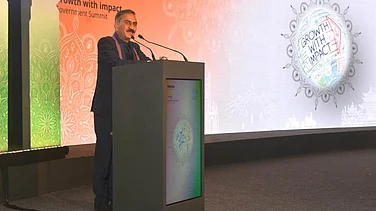Fraud applications have been a menace to many users who have lost money unknowingly. They are fake applications that are mirrors of legitimate applications available on the market. Fraudsters and scammers create applications to snare people to use them. These applications could be similar to popular applications to mislead users, who download them on their phones or laptops. It can be a jumble of words that are more or less similar to frequently-used applications. However, these applications have one thing in common; they are disguised as genuine applications, and are well constructed.
It is public knowledge that many of these fraudulent apps have also been promoted and advertised on Google, Facebook, Instagram, and TikTok, among others. According to published information, more than 500,000 Indians were cheated of approximately Rs. 150 crore through Chinese applications. Many of these investment applications were used for swindling small investors.
There are too many cash applications that have witnessed a high percentage of fraud. This is because they cause direct financial damage. Some of these applications are; Ultima Keyboard space 3D pro, GT Sports Racing Online, Fitness Ultimate 2o21, Wi-Fi passcode unlock, video mixer editor pro, RT news, UC Browser, Clean It Reface Ultra, live photo animator, ultra-camera HD, water drinker reminder, magic mix, etcetera. Researchers have identified more than 151 applications, which, once installed on phones, can carry out fraudulent activities.

India has emerged as one of the fastest Internet and mobile growing market, and digital adoption has been on a lightning speed because of affordable Internet connectivity, extensive smartphone penetration, and growing household income. With over billion mobile subscribers, India is the top country when it comes to app installations. The push for digitisation by stakeholders has incensed the usage of networks and applications. The number of mobile applications being used in India come to about 3.48 million applications. The Google Play and Apple App Stores have the highest number of registered applications. These applications function mostly in areas like credit, investment, cryptocurrency, health, aggregators, agricultural, data monitoring, gaming, stock markets, and so on. The risk for users is certainly high, as the usage of mobile applications is high, especially in open architecture.
These applications can access phone locations, carry out phishing activities, use phone data, misuse your payment gateway, and cause financial loss. Data can be accessed and used for various illegal purposes. Such applications can have both financial and non-financial implications. Online users have to be very vigilant to ensure that they do not become victims of these fraudsters.
The Government of India has taken measures to eradicate cyber-crime. Local police have consistently arrested fraudsters, and also investigated promoters of such applications. The government also banned Chinese applications to protect investors. A comprehensive list of fake applications was also circulated to spread awareness.

Application users have to be prudent before they download such applications. Users should not bite the bait and fall prey to these fraudsters. Researching the applications by the user is a must before using and downloading applications. It is also important to see the reviews before using them. It is also important to look for details like the developer of the application and the non-symmetrical placement of logos. Users must choose applications that have been developed by branded and well-established companies. Fraudulent applications are developed for short-term use, and thus, do not have the same quality as genuine applications.
Password protection is a very basic step that users must follow. Passwords must be changed frequently and must not be shared. Preventing identity theft is a very important aspect that can be achieved by protecting information. Two-factor authentication would certainly reduce the risk to users. Tokenisation of information is a way to secure data, especially, sensitive data.
Details are stolen by fraudsters and fake accounts are opened, which are then misused. Users need to check the URL before clicking on them. There are instances of pagejacking, where clicking on the link may redirect the user to a website. The user may feed the data, which can be misused. Users can protect it by feeding data to an OTP-generating and secured website.
Users must also avoid downloading files from unknown sites. These applications can contain malware or spyware that can access data from phones or PCs. This malware can transmit data, such as calls, messages, and advertisements soliciting using certain applications, which can be a phishing attempt. This is a mechanism to get data and information, and fraudsters can easily misuse any such data. It is also important to know that mobile applications are less secure than websites. Mobile phones have far fewer security tools than websites.
Checking Internet and phone data bills is a secure method to crosscheck and monitor unauthorised usage. Storing passwords, authentication, and credit and debit card details on phones and tablets is a security threat. Using a secured network is a way to minimize users’ risk, as open networks are vulnerable.
Regularly verifying bank balance statements is a good mechanism to ensure that your balances are intact. As the threat increases, a large number of tools are available for fraud detection. Artificial intelligence and machine learning technology are available for fraud detection. Tools like Seon, Emailage, and etcetera can help prevent fraud. There are a lot of fraud detection software that are available. Google Play also has an inbuilt mechanism to minimise fraud.
India’s push towards cashless payment has grown the industry size to $204 billion. Mobile phones are an extremely popular medium for making payments, wherein $290 billion was transacted. Mobile payments grew faster than credit and debit cards. Mobile payment recharges are an indication of the extent to which mobile phones are being used. The UTR system in India has been successful, unlike in China, where WeChat has caused deposit leaks from banks. The Indian IT infrastructure has stood the test of time. Secured phones and networks will play a vital role in minimising the loss of accounts through fraud. Many tools can protect and prevent fraud.
But the user will have to follow protocols like password protection, strong authentication, selecting secured networks, and basic file diligence before using applications. Finally, digital literacy and the human element will play a major role in the prevention of fraud, as one has to stick to the basics and be vigilant.
The author is the former chairman of BSE.
(Disclaimer: Views expressed are the author’s own, and Outlook Money does not necessarily subscribe to them. Outlook Money shall not be responsible for any damage caused to any person/organisation directly or indirectly.)

























